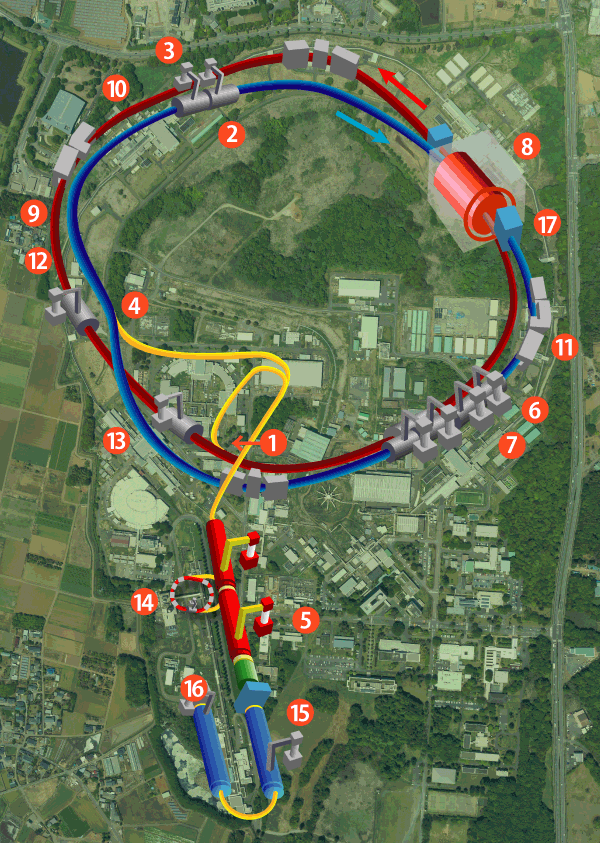Former Director of Accelerator Laboratory, Katsunobu Oide, Received Rolf Wideröe Award
![]() Professor Emeritus Katsunobu Oide, the former director of the Accelerator Laboratory at KEK, has been awarded the Rolf Wideröe Prize. This prestigious award is given to researchers who have achieved outstanding contributions in the field of accelerator science. This year, the largest international conference in this field, the International Particle Accelerator Conference (IPAC’23), was held in Venice, Italy, where Prof. Oide delivered a lecture commemorating his receipt of the Wideröe Prize. In particular, the story, “Love thine (your) beam, and your beam will surely respond to you” received enthusiastic applause from the audience. He has been involved in numerous accelerator projects both at home and abroad and has made innovative proposals that other researchers would not have conceived. Allow us to introduce Prof. Oide’s remarkable research achievements to date.
Professor Emeritus Katsunobu Oide, the former director of the Accelerator Laboratory at KEK, has been awarded the Rolf Wideröe Prize. This prestigious award is given to researchers who have achieved outstanding contributions in the field of accelerator science. This year, the largest international conference in this field, the International Particle Accelerator Conference (IPAC’23), was held in Venice, Italy, where Prof. Oide delivered a lecture commemorating his receipt of the Wideröe Prize. In particular, the story, “Love thine (your) beam, and your beam will surely respond to you” received enthusiastic applause from the audience. He has been involved in numerous accelerator projects both at home and abroad and has made innovative proposals that other researchers would not have conceived. Allow us to introduce Prof. Oide’s remarkable research achievements to date.
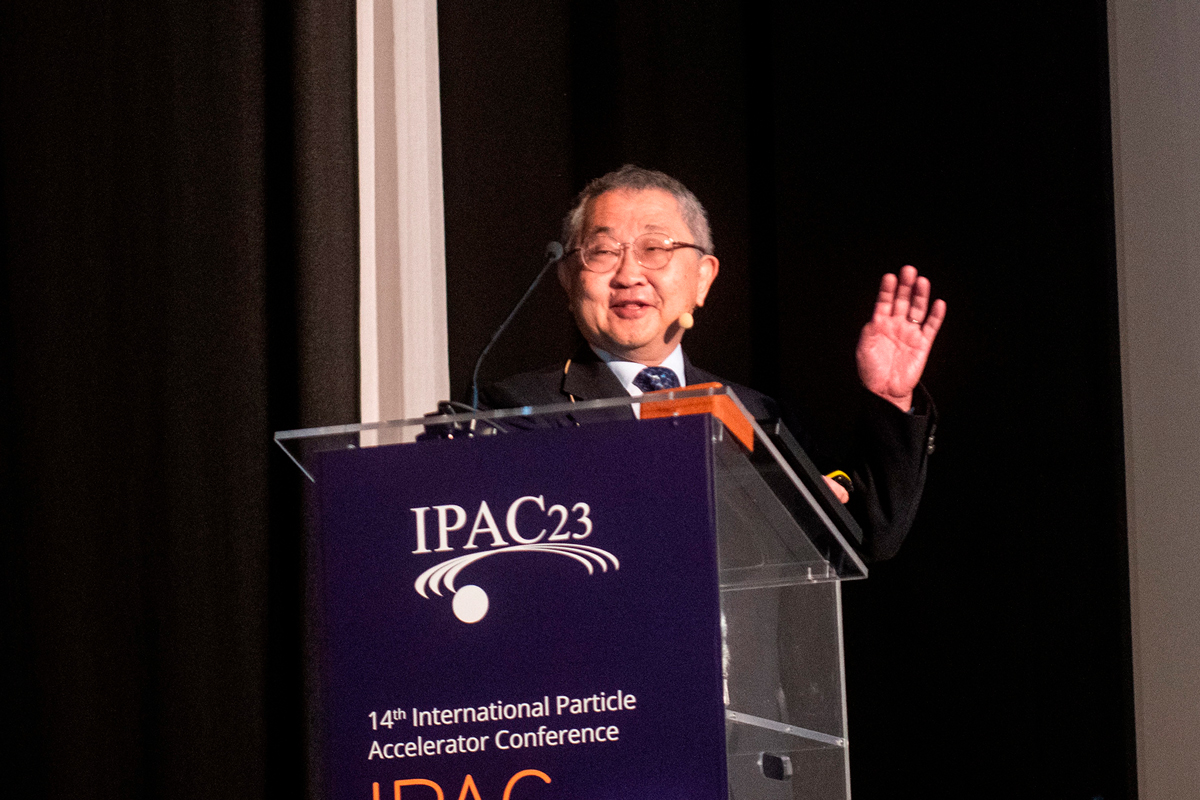
Prof. Oide giving a lecture at the award ceremony. Courtesy of IPAC’23 conference organization, Pics by Mazzola and Padovani
In the 1980s, he discovered the fundamental limit known as the Oide Limit associated with the beam size at collision points in electron-positron colliders due to synchrotron radiation from final focusing electromagnetic magnets. Additionally, he demonstrated that beam collisions in a storage ring with a finite crossing angle, using a tilted beam bunch, could maintain collision efficiency without loss, a concept later adopted in the KEKB accelerator.
In the 1990s, Prof. Oide led the design team for the KEKB B-Factory accelerator*1 and successfully completed the ambitious design aiming for more than three times the luminosity (collision performance) SLAC’s PEP-II accelerator through innovative beam optics design and the concept of collision with finite crossing angle*2. KEKB accelerator was constructed based on his design.
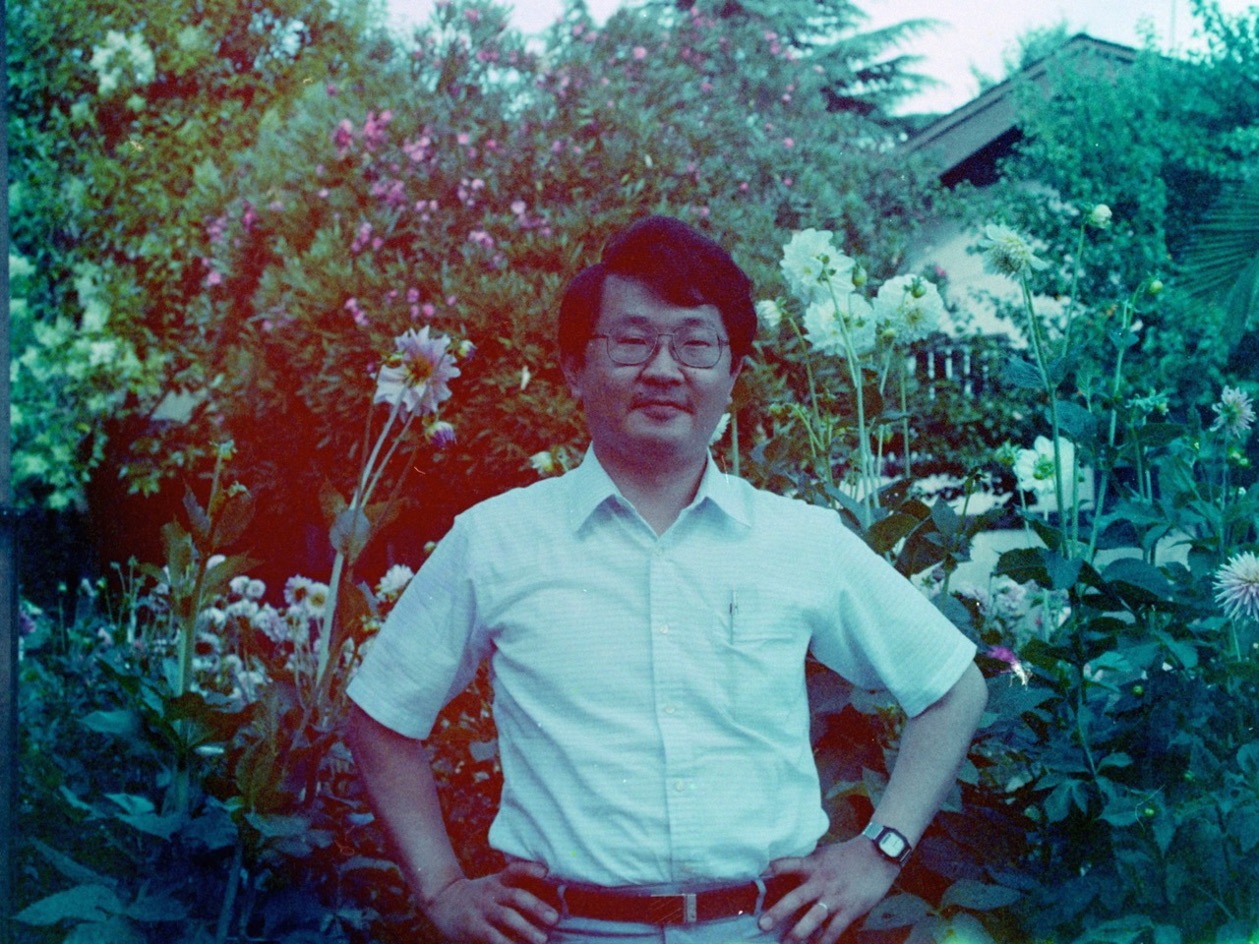
Prof. Oide visiting SLAC (1988, Palo Alto, USA)
KEKB accelerator and Belle detector begun collision experiments of electron and positron beam in 1999. Prof. Oide led the KEKB Beam Operation Group and took the initiative in beam tuning. An unexpected issue called “electron cloud instability” occurred, in which electrons emitted from the vacuum duct surface cluster around the positron beam, increasing the beam size. However, under Prof. Oide’s leadership, the accelerator team overcame the problems. They achieved the design luminosity within approximately four and a half years of operation and established the world’s highest luminosity at the time. This success proved the effectiveness of the KEKB accelerator’s design principles. It played a crucial role in supporting the Nobel Prize awarded to Dr. Kobayashi and Dr. Maskawa in 2008 for their work on CP violation in B-meson decays, which was heavily influenced by the high luminosity achieved at KEKB.
Moreover, Prof. Oide and his team proposed the use of crab cavities. The crab cavities are special equipment that tilts the beam bunch in the longitudinal direction, allowing a head-on collision maintaining a finite cross-angle collision. The development of crab cavities was driven by the simulation results that crab collisions could improve luminosity*3. In 2007, the world’s first crab cavity was introduced into the KEKB accelerator. The success of the world’s first practical operation of the crab cavities not only improved luminosity of KEKB but also encouraged plans of accelerator projects using crab cavities around the world.
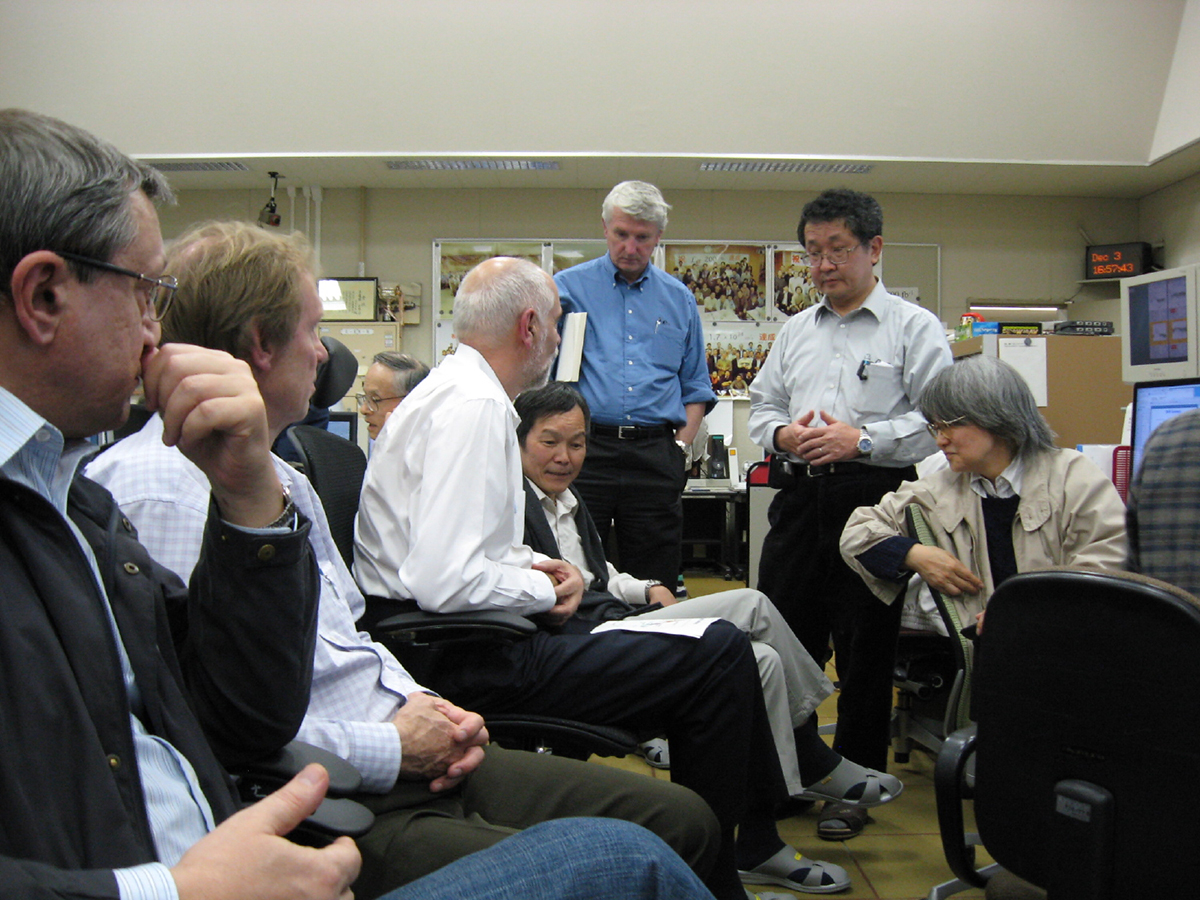
Prof. Oide discussing beam tuning with KEKB review committee members (2007, at KEKB control room)
The accelerator design program SAD (Strategic Accelerator Design), developed mainly by Prof. Oide, also significantly contributed to the success of the KEKB accelerator. Recognizing the need for an excellent accelerator design program, Prof. Oide and his colleagues continued to develop SAD from the later stages of TRISTAN*4 operation. By the time KEKB began operation, various expansions and enhancements had enabled SAD to be used during beam operation. SAD facilitated the beam measurements, beam dynamics analysis, beam condition optimization, and control of devices, leading to daily improvements in beam performance. Quick experiments were crucial, as not all new ideas could be guaranteed to enhance beam properties or collision performance due to constraints such as equipment limitations. Given the limited machine time for certain tests, the accumulation of performance improvements was one of the factors in achieving the world’s highest luminosity.
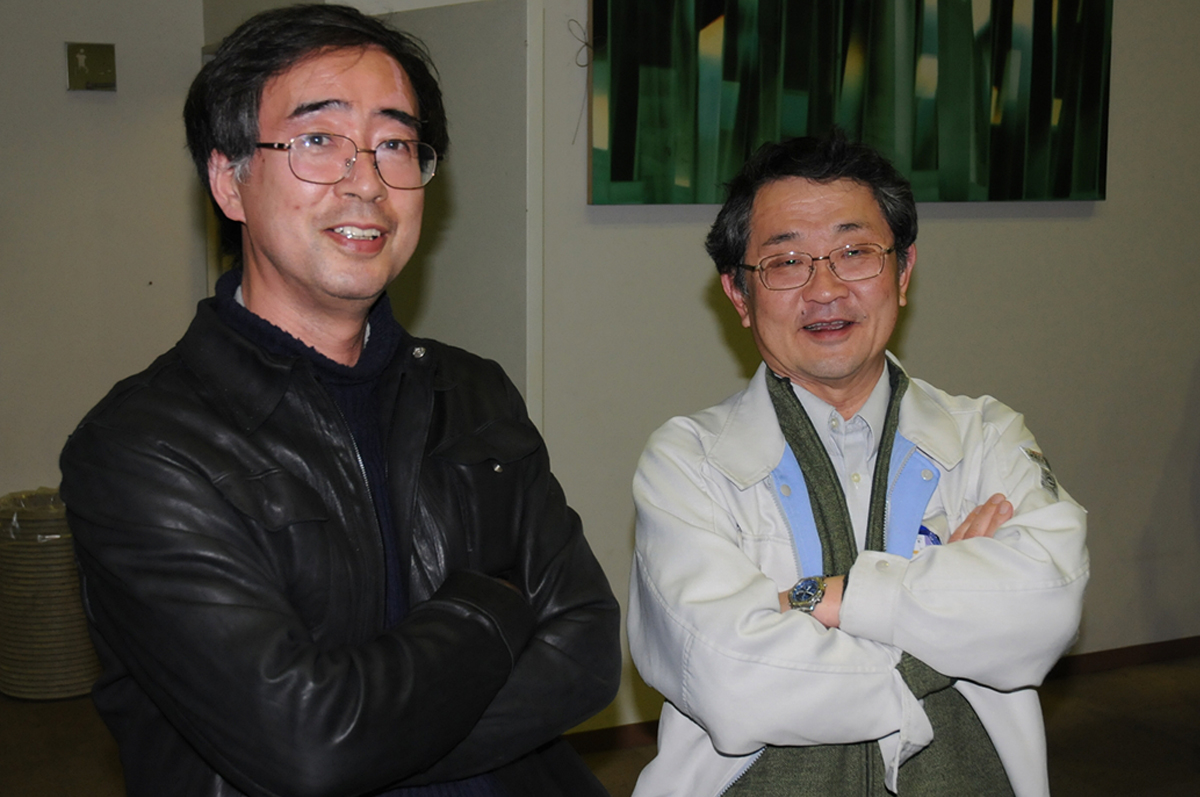
Prof. Oide as Director of Accelerator Laboratory (2010)
The theoretical foundation of particle physics research in Japan had been established by theorists such as Hideki Yukawa and Shinichiro Tomonaga. The experimental and technical foundation of particle physics using high-energy accelerators in Japan had been established by achieving the world’s highest energy electron-positron collision at TRISTAN at the time. KEKB faced tough competition from PEP-II in those of luminosity. Meanwhile, there was continued cooperation, information exchange and sharing of ideas between the control rooms of both accelerators and in various research meetings. Additionally, in KEKB, under the leadership of Prof. Oide, international guidelines for the design and operation of high-performance accelerators were developed. In the future, it will become difficult for a single country to independently construct and operate large high-energy accelerators. Therefore, international cooperation structures such as those established by KEKB and PEP-II will become increasingly important.
In the 2000s, Prof. Oide and his colleagues proposed SuperKEKB project as the next accelerator of KEKB. In the design of SuperKEKB, significant improvement of performance is expected through the optimization of the beam collision point and its vicinity. The SuperKEKB accelerator and Belle II detector, which began full-scale collision experiments in 2019, have already achieved the luminosity that is more than twice that of KEKB, and are aiming to further enhance their performance while attracting international attention.
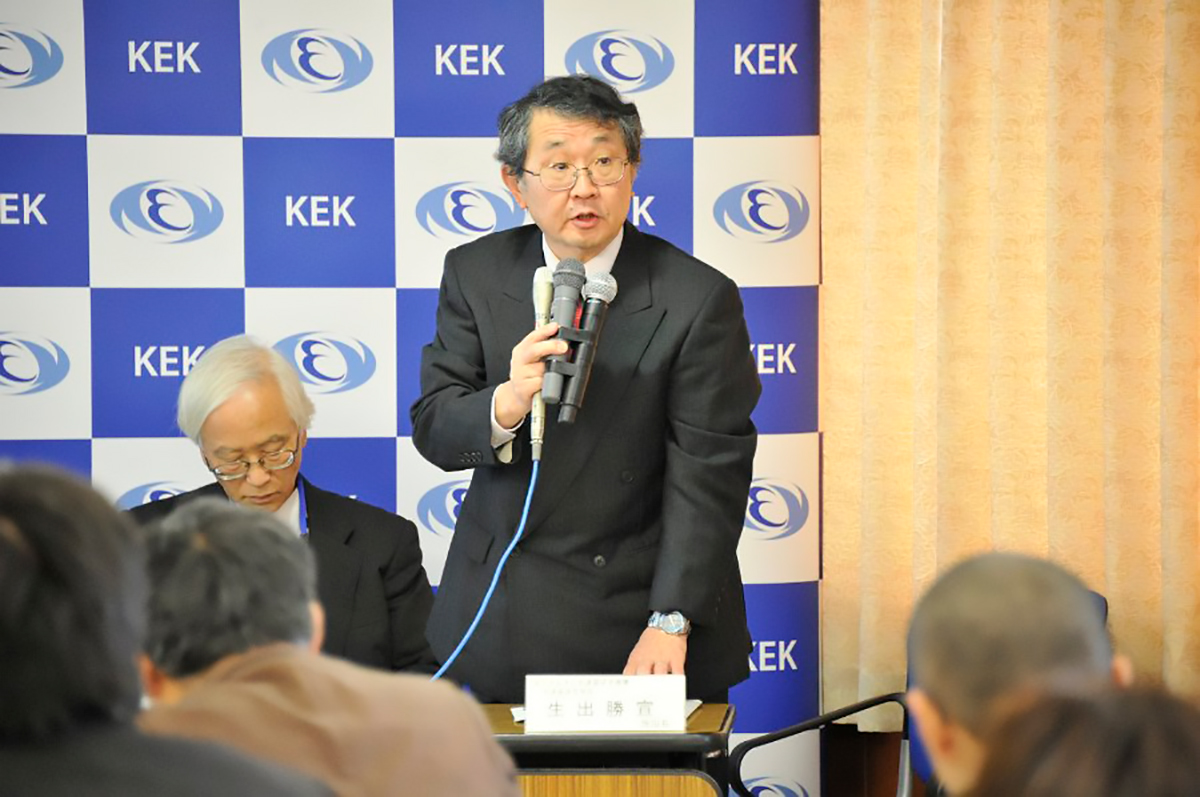
Prof. Oide answering questions from reporters (2011, at Groundbreaking Ceremony for the SuperKEKB project)
Prof. Oide also played a significant role in the development of linear colliders, contributing to beam dynamics analysis of damping ring and optics design in FFTB (Final Focus Test Beam Facility) in SLC project*5 at SLAC, as well as optics design of ATF (Accelerator Test Facility) damping ring at KEK. Additionally, as a member of the International Technology Recommendation Panel (ITRP) in 2004, he contributed to the selection of technology options for the future international linear collider, including the choice between normal and superconducting acceleration.
After retiring from KEK in 2015, Prof. Oide moved his base of activities to CERN and became involved in the FCC (Future Circular Collider) project*6. The FCC plans to first build the electron-positron collider FCC-ee to conduct precise measurement experiments on Higgs particles, and then build the proton collider FCC-hh to conduct collision experiments at unprecedentedly high energies. Regarding this FCC, Prof. Oide proposed a beam optics design leveraging his keen insight and solved the problem that other researchers had not been able to solve, which was to satisfy various challenging conditions simultaneously.
Prof. Oide is currently a visiting professor at the University of Geneva, where he leads the beam optics design group of the FCC-ee project. He also continues to contribute to the further advancement of accelerator science by offering guidance to several international accelerator projects, including SuperKEKB.
*1 B-factory accelerator: KEKB and SuperKEKB accelerators are designed to produce large quantities of B meson and anti-B meson pairs through collisions between electrons and positrons. Therefore, they are referred to as “B Factory Accelerators.” By carefully and precisely measuring the slight differences in the decay of the generated B mesons and anti-B mesons, researchers investigate “CP violation” and explore new physics beyond the Standard Model.
←Return to article
*2 collision with finite crossing angle: In this approach, the electron beam and positron beam do not collide head-on, but at a slight angle. Compared to the commonly used head-on collision, this offers the advantage of facilitating the separation of the two beams before and after the collision.
←Return to article
*3 the simulation results that crab collisions could enhance luminosity: In 2004, Prof. Ohmi of KEK conducted a beam-beam simulation that demonstrated this potential.
←Return to article
*4 TRISTAN: Transposable Ring Intersecting STorage Accelerators in Nippon. Before KEKB, the electron-positron collider was in operation from 1986 to 1995.
←Return to article
*5 SLC project: The world’s first electron-positron linear collider operated in the 1980s and 1990s at SLAC, USA.
←Return to article
*6 FCC project: A huge circular accelerator with a circumference of more than 90 km planned by CERN.
←Return to article

